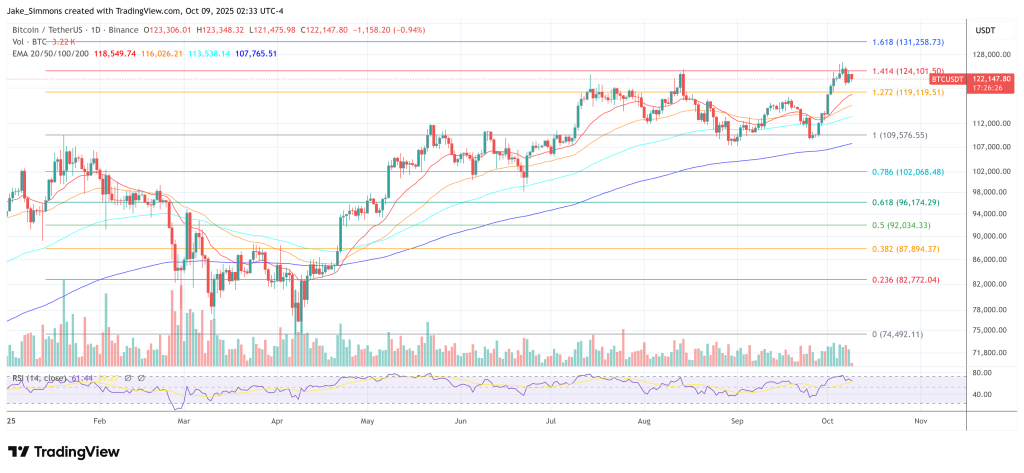Arthur Hayes argues that Bitcoin’s widely cited four-year halving cycle has broken down and that macro liquidity—not protocol mechanics—will dictate the next leg of the market. In a new essay titled “Long Live the King!” published on October 9, 2025, the BitMEX co-founder contends that policy choices in Washington and Beijing are setting up a structurally easier money regime that should keep pushing BTC higher, even as many traders look for a textbook cycle peak. “The four-year anniversary of this fourth cycle is upon us,” he writes, but those applying the old pattern “miss why it will fail this time.”
The 4-Year Bitcoin Cycle Is Dead
Hayes’ framework is explicit: the price of money and its quantity are the dominant variables for risk assets, and Bitcoin’s USD value rises and falls with dollar liquidity. “Bitcoin in the current state of human civilization is the best form of money ever created,” he says, yet its dollar price “will ebb and flow because of the price and supply of dollars.” He extends the lens to China, arguing that the yuan credit impulse has historically amplified or dampened crypto cycles alongside US conditions.
To make the case that halving-anchored timing is obsolete, Hayes revisits four eras and links each to turning points in dollar and yuan liquidity. The “Genesis Cycle” (2009–2013) rode post-GFC quantitative easing and a surge in Chinese credit until both decelerated into 2013, “popp[ing] the Bitcoin bubble.”
The “ICO Cycle” (2013–2017) was powered less by dollars than by “a fuck ton of yuan sloshing around the global money markets,” as the China credit impulse spiked in 2015 amid a yuan devaluation, before tightening and higher U.S. rates ended the run. The “COVID Hoax” period (2017–2021)—Hayes’ label for the pandemic-era policy response—saw “helicopter money” under President Donald Trump and a rapid doubling of dollar supply with rates pinned at zero, propelling all risk assets, including crypto, until inflation forced tightening in late 2021.
In the current “New World Order” phase (2021–?), Hayes argues that liquidity plumbing, not halvings, explains Bitcoin’s resilience. He highlights the US Treasury’s issuance tilt toward short-dated bills, which drained the Fed’s reverse repo facility and “unleashed ~$2.5 trillion of liquidity into the markets,” and he characterizes this as a political choice to “run the economy hot.”
He links the macro pivot directly to today’s setup: “The Fed resumed cutting interest rates in September even though inflation is above its own target,” while the administration seeks to “lower the cost of housing” and loosen bank regulation to spur lending to “critical industries.” In Hayes’ reading, the policy signals are unambiguous: “money shall be cheaper and more plentiful.”
China, in his view, won’t reprise the extreme credit surges of 2009 or 2015, but it also won’t be a headwind. While Beijing grappled with deflationary pressure and a property-sector reckoning, Hayes expects pragmatism to prevail: “When the economic pressure proves too intense… Chinese policymakers print money.” The upshot, he says, is that China may not drive global fiat creation, “but it won’t hinder it either.”
The unifying thesis is that cycles have always been monetary cycles wearing different masks. Bitcoin’s earlier peaks coincided with decelerating dollar and yuan liquidity; its latest advance reflects a new alignment of political priorities with easier money, regardless of the halving calendar.
Hayes puts it bluntly: “Listen to our monetary masters in Washington and Beijing. They clearly state that money shall be cheaper and more plentiful. Therefore, Bitcoin continues to rise in anticipation of this highly probable future.” His closing line distills the claim to a coronation metaphor: “The king is dead, long live the king!”
At press time, BTC traded at $122,147.

Featured image created with DALL.E, chart from TradingView.com



